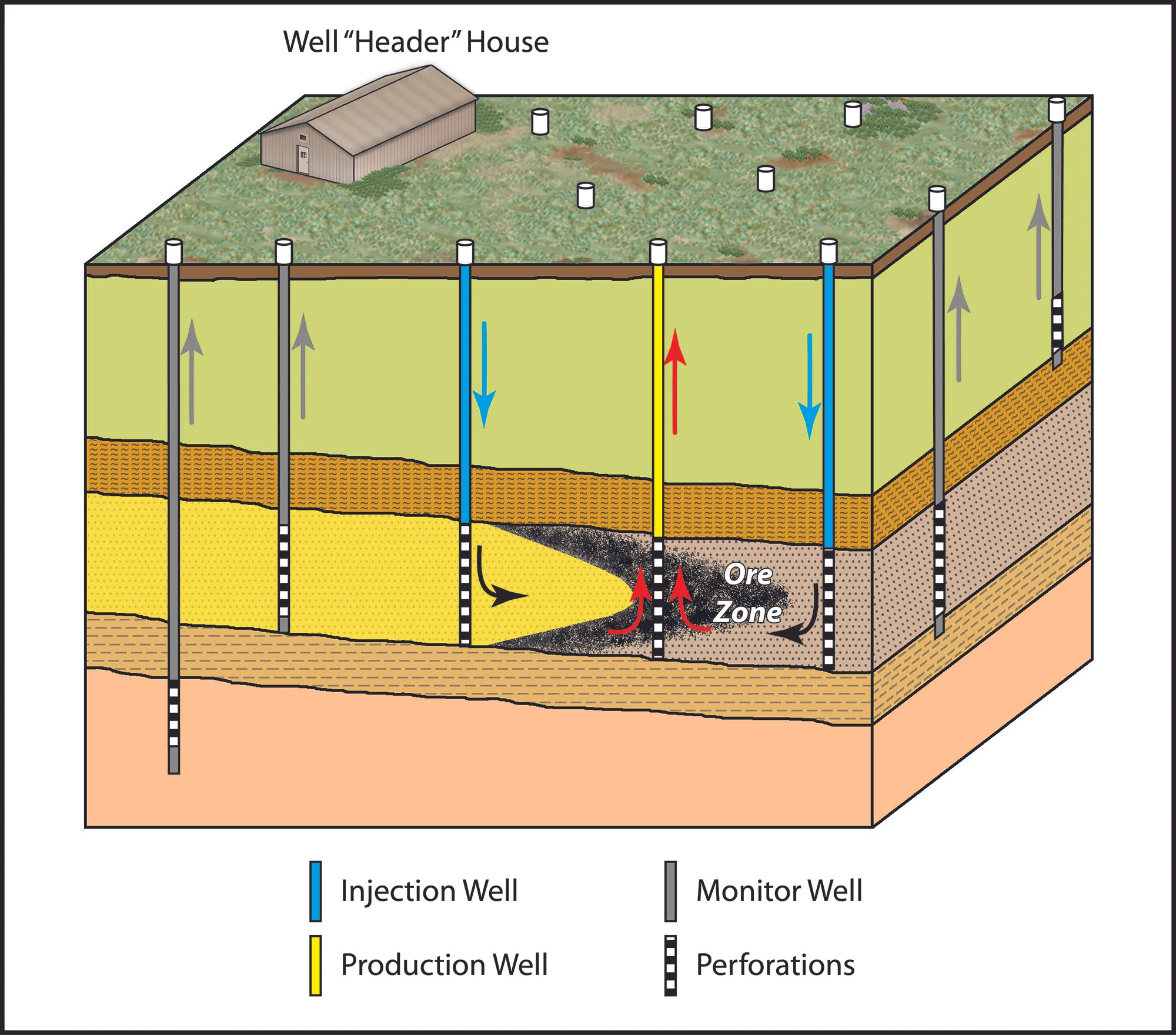Today, the National Mining Association (NMA) and U.S. Nuclear Regulatory Commission (NRC) are holding the second day of their annual Uranium Recovery Workshop in Denver, Colorado. The meeting brings together mostly industry consultants and government officials to provide a status of uranium mining in America. Uranium production within the U.S. mostly comes from in-situ recovery (ISR) uranium mines located in Wyoming as well as one operating mill in Utah; however, because the U.S. only holds about 1% of the world’s supply, the bulk of the uranium needed to fuel nuclear power plants comes from other countries.
Worldwide about half are conventional mines (open pits and underground workings) and half are ISR mines. Australia holds about 30% of the world’s supply but currently only produces about 10% according to the World Nuclear Association. The largest supplier of uranium in the world is the former Soviet Republic of Kazakhstan which produces about 39% of the world’s supply of uranium. The other big producer is Canada providing about 22% of world uranium supply.
In 1984, I completed my Master’s of Science geochemistry thesis at the University of Wyoming on the in-situ recovery (ISR) process to extract uranium ore using groundwater well fields. The ore is typically found in sandstone deposits within confined aquifers where uranium was deposited in the absence of oxygen in contact with carbon and removed with ISR by injecting oxygen and chemicals to change the acid or base content as measured by pH. This is depicted in the Wyoming Geological Survey figure as yellow oxidized sandstone and the darker colored reduced-zone ore deposit. The ISR mine injects chemicals to remove the uranium. What I found based on laboratory testing was that the ISR process to remove uranium seemed quick and efficient; however, great effort would be needed to restore the aquifer back to pre-mining conditions and that rock-water-gas interactions must be understood. Here is what EPA currently says about mitigating hazards at ISR mines.
In 2007, the price of uranium spiked due to low supply and increasing demand (as well as stock market speculation) to prices around $136 per pound, an increase of about 20 times in four years. This resulted in a resurgence of mining applications and NRC prepared a Generic Environmental Impact Statement (GEIS). I had worked at NRC just two years prior and was very familiar with the regulatory process for reviewing license applications. At that time as an independent consultant, I wrote a journal article to provide my public comments on mitigating hazards for ISR mining and aquifer restoration. I advocated the need for site-specific EIS reports to which NRC eventually agreed! Here is link to the blog and article and background information on the importance of the National Environmental Policy Act. I shared this article at the 2008 NMA Uranium Recovery Workshop in Denver to create discussions on both sides of industry and regulators.
On March 11, 2011, the 9.0 earthquake and tsunami in Japan devastated coastal communities and the Fukushima Daiichi nuclear power plant. The nuclear disaster also sent shock waves through the industry initially causing demand to be cut, uranium prices to fall, and declines in mining production. However, as I will discuss in an upcoming blog on nuclear power, demand for uranium is rising as a source of zero-carbon energy production.
In January 2013, the U.S. Congress directed my office at the Department of Energy, Office of Legacy Management (DOE-LM) to evaluate old uranium mines that were operated by the Atomic Energy Commission (AEC) from about 1948 to 1970. I took on responsibility for managing the report on location and status of mines; based on permit records we found 4,225 mines that we reported to Congress. This report, delivered in 2014, spurred a new program to field locate and assess hazards at federal uranium mine sites. Hazards might include physical safety hazards from open shafts or chemical and nuclear hazards from hills of waste rock and low grade ore deposits. Here is a DOE-LM fact sheet on the process and preliminary results.
In December 2016, I took on an additional assignment at DOE-LM as program manager of the Uranium Leasing Program. AEC reserved 25,000 acres on public lands in Colorado for uranium mining. My efforts involved resolving a lawsuit filed under NEPA and the Endangered Species Act. Here is an article by the environmental litigants that sued DOE in 2011 and the case was resolved by the U.S. District Court in March 2018, just one month before my retirement! This appears to be a win-win solution for both sides.
During my 35-year career and currently renewed opportunity to express my independent opinion, I’ve observed very strong views of people in favor of uranium mining and nuclear power as well as strongly opposed anti-nuclear activists. Information coming from both sides is often skewed and obtaining the true facts is opaque. I’ve attempted throughout my environmental science career to stay neutral and find ways to improve the environment and public health by joining others to take positive actions. The most important action in resolving differences could be through more transparency and debate such as using NEPA public meetings before going to court to consider the benefits and risks of uranium mining worldwide. Mitigating the hazards of mining uranium in the U.S.and other countries might well be worth the risks of having (or not having) a dependable domestic supply of uranium needed for nuclear power generation of electricity. Public support for increasing regulatory oversight will cost more to consumers but is greatly needed to increase environmental protections and prevent or mitigate nuclear hazards. The next blog discusses the milling process that created contaminated waste tailings.

